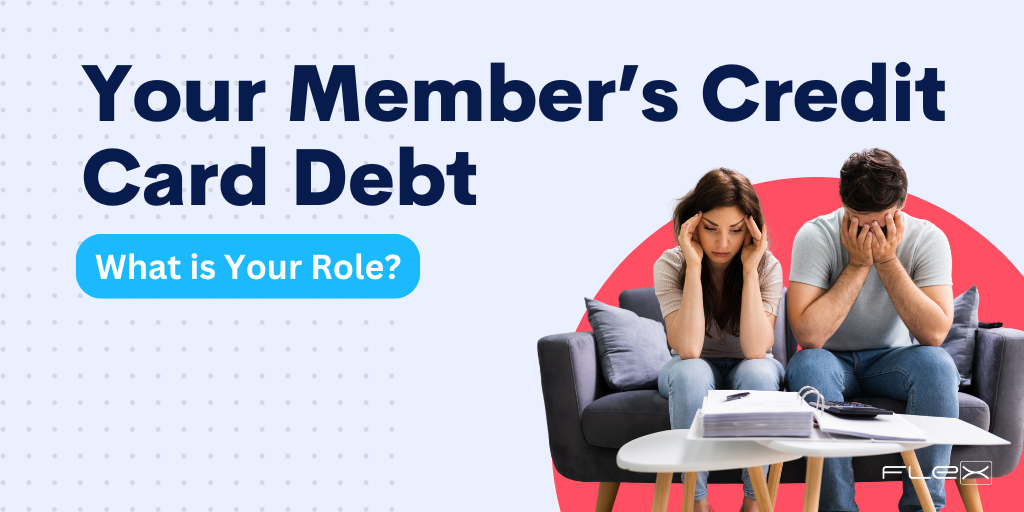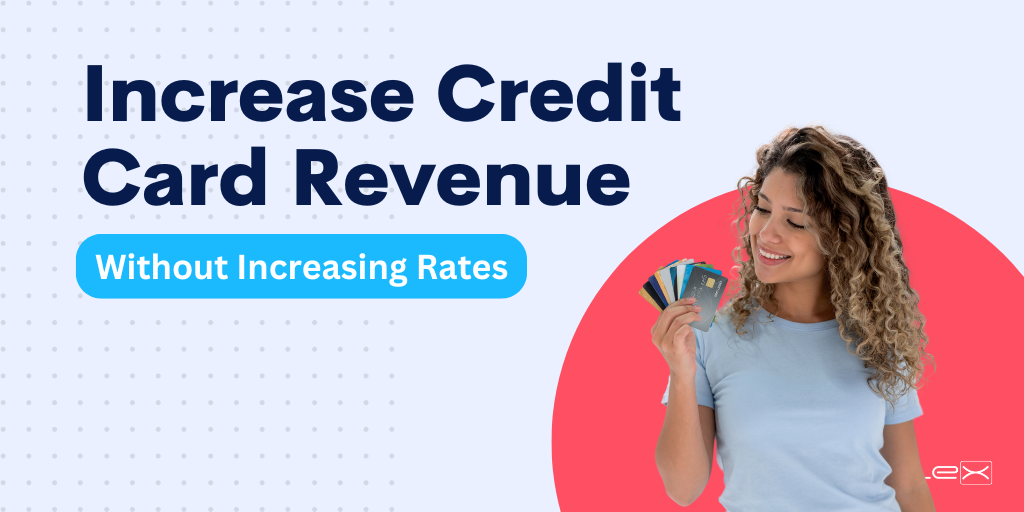10 Simple Tips to Teach Your Members How to Pay Down Debt
 Over the course of the last year, Americans’ total credit card debt continued to climb, reaching an estimated $905 billion in total debt in 2017, according to NerdWallet. That’s almost an 8% increase from the previous year, with the average household carrying an estimated $15,654 in credit card debt alone. A further look at the source of all this debt revealed a few things about our charging habits. While not all that surprising, some of the most frequent charges could be attributed to the payment of medical expenses. Recently we’ve seen the cost of medical care continue to rise, and many needing care found themselves having to resort to piling the charges on to their credit balance. In addition, we have also seen the cost of food increase, as well as the amount cardholders are paying in interest. This all plays a significant role in the increase in revolving debt and the ability to pay it down.
Over the course of the last year, Americans’ total credit card debt continued to climb, reaching an estimated $905 billion in total debt in 2017, according to NerdWallet. That’s almost an 8% increase from the previous year, with the average household carrying an estimated $15,654 in credit card debt alone. A further look at the source of all this debt revealed a few things about our charging habits. While not all that surprising, some of the most frequent charges could be attributed to the payment of medical expenses. Recently we’ve seen the cost of medical care continue to rise, and many needing care found themselves having to resort to piling the charges on to their credit balance. In addition, we have also seen the cost of food increase, as well as the amount cardholders are paying in interest. This all plays a significant role in the increase in revolving debt and the ability to pay it down.While the amount of credit card debt has gone up, there is some good news. The growth of household income is finally outpacing the growth in the cost of living. Nerd Wallet performed a survey that found a significant portion of those polled admitted that many of their charges were discretionary – unnecessary expenses – which means when the time comes to tighten the belt and pay down the debt, the means to do so is there, as long as they are able to muster a little willpower and a realistic budget.
If your members need a little coaching on how to tighten their belt in order to get a handle on some of their debt – and ultimately pay it off – here are some tips to share with them. Many of these are tried but true methods, and others reflect the modern way we use our cards and manage our money.
1. Build a budget. This is the basis of any plan to pay down debt – knowing what’s coming in and what’s being paid out. There are a variety of ways to track this and assist in staying focused throughout the month. Many mobile banking apps now have tools to track spending and build a budget. Many also have card controls that allow spending limits to be set and alerts sent when a transaction is above a set limit. If all else fails, a good old-fashioned Excel spreadsheet will work too. Once a budget is established and a few months tracked, it will be easy to see where the most money is being spent and identify opportunities to cut back. Many credit unions also offer member services such as credit counseling or assistance with money management and establishing a budget.
2. Pay off the most expensive debt first. Credit cards and loans should be organized based on who is charging the highest rate of interest and the most fees. Then, establish a plan that works towards paying down the loans that are costing the most first. Once one card balance is paid off, apply that same payment towards another card, increasing the monthly payment. Over time, debt will begin to be paid down at a faster rate with each card.
3. Pay more than the minimum balance. Most minimum payments equate to 2-3% of your balance. Paying only the minimum will result in paying the balance down at a very slow rate, and if the card is still being used for purchases, maybe not down at all. Make a conscious effort to pay at least 2X the minimum if possible. As mentioned above, once the balance is paid off, apply that amount towards the next card to help make a bigger payment. Be careful not to fall into the mindset that since the card is paid off, it’s time to shop again.
2. Pay off the most expensive debt first. Credit cards and loans should be organized based on who is charging the highest rate of interest and the most fees. Then, establish a plan that works towards paying down the loans that are costing the most first. Once one card balance is paid off, apply that same payment towards another card, increasing the monthly payment. Over time, debt will begin to be paid down at a faster rate with each card.
3. Pay more than the minimum balance. Most minimum payments equate to 2-3% of your balance. Paying only the minimum will result in paying the balance down at a very slow rate, and if the card is still being used for purchases, maybe not down at all. Make a conscious effort to pay at least 2X the minimum if possible. As mentioned above, once the balance is paid off, apply that amount towards the next card to help make a bigger payment. Be careful not to fall into the mindset that since the card is paid off, it’s time to shop again.
4. Take advantage of balance transfers. If credit scores are good enough, send your members offers in the mail or online to transfer a balance for a temporarily lower or even 0% APR. Invite your members to take advantage of this, as it offers a cost-free way to pay down debt, making the most of each payment while not incurring any additional fees or interest. Warn members of other financial institutions that hide information in the fine print. They often expire the promotional interest rate of the card and the new rate become absurdely high. Invite your members to reach out to the credit union and see what offers are available. Becoming a member has its privileges, and among those are often lower rates and fees.
5. Use tax returns, bonuses and holiday gifts to pay down balances. If a member is fortunate enough to receive a little extra from work around the holidays, or a performance bonus, make sure to apply the extra cash towards paying off debt. The overall relief and freedom will outweigh the temporary satisfaction of any trip or large purchase. The same applies for a tax return if they receive one.
6. Stop or limit credit card spending. This tip should almost be #1. Progress will never be made in paying down a balance if the card itself continues to be used, creating a never-ending cycle. Cards need to be left at home, spending notifications set and some cards should be used for emergencies only and have limited availability. Use instead a debit card or cash, and spend only a specified amount when going out, such as the amount budgeted for groceries. It’s too easy to just pull out the card at the store and buy that latte on a whim or buy something small online. Additionally, access to real-time account balance information through your mobile banking app can help stem the urge to make that purchase and keep things in perspective.
7. Delete credit card information from online stores. This is a big one, especially in this day and age of digital online shopping, the IoT, and delivery subscriptions. It’s way too easy to add something to a virtual cart, or in some cases, to swipe right, and have a new crockpot delivered in two days. The temptation of instant gratification is made possible by having a credit card stored on the site, and unless a certain amount of willpower is possessed, should probably be removed. Watch out as well for those monthly subscriptions, like meal delivery kits, where items are delivered automatically unless specifically canceled.
8. Review other household expenses. Take a look at other household expenses, such as cable and internet bills. Consider reducing channel packages or the amount of data for the household's phone plan. Unless they are needed for work, there is probably a smaller package that would work just as well, even if it is just temporarily. The same can be said about utility use and grocery shopping. Remind members to reach out to your credit union to see of you offer a better rate on auto loans. Even the smallest savings will allow for more to be applied toward a credit card payment.
9. Change habits. This might sound simple, but it can make a big difference. Pack a lunch for work, rent books and movies free from the library instead of online, work-out at home instead of in a gym, and make an effort to eat dinners at home, instead of eating out so much. It might mean giving up some conveniences, but in the long run, it will pay off.
10. Celebrate hitting goals. It's an achievement to have paid an account off. Or even half off. Once a goal has been met, celebrate with a small purchase. Completely cutting off all discretionary spending will make paying down the debt seem impossible, if not painful, and it might be easier stay on track if there is a reward waiting at the end.
Keep these tips in mind when talking to members looking to pay down debt. Assure them a little perseverance and some help from your credit union and its member services can make a big difference in achieving members' goals to be debt free.



